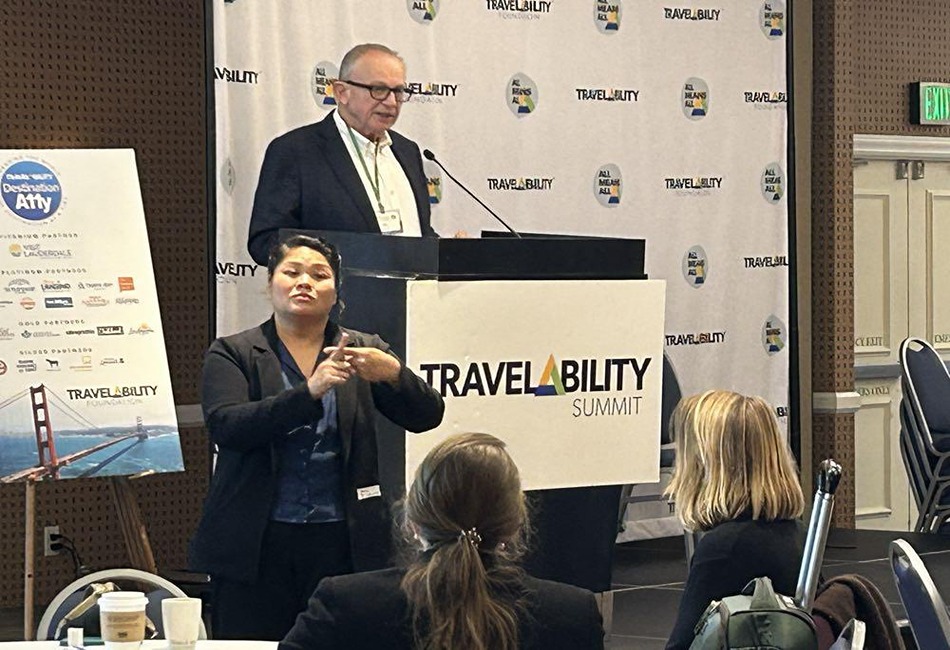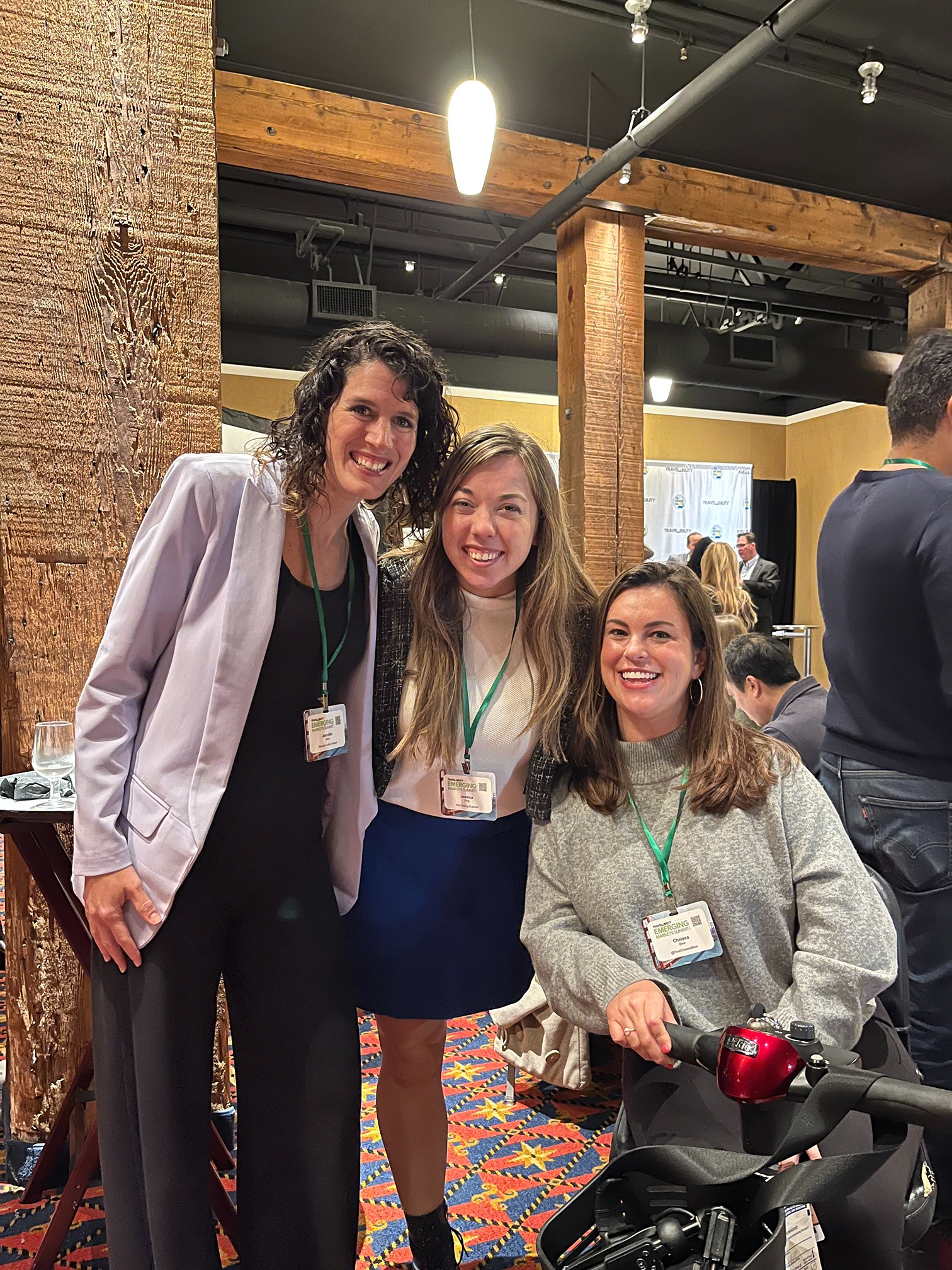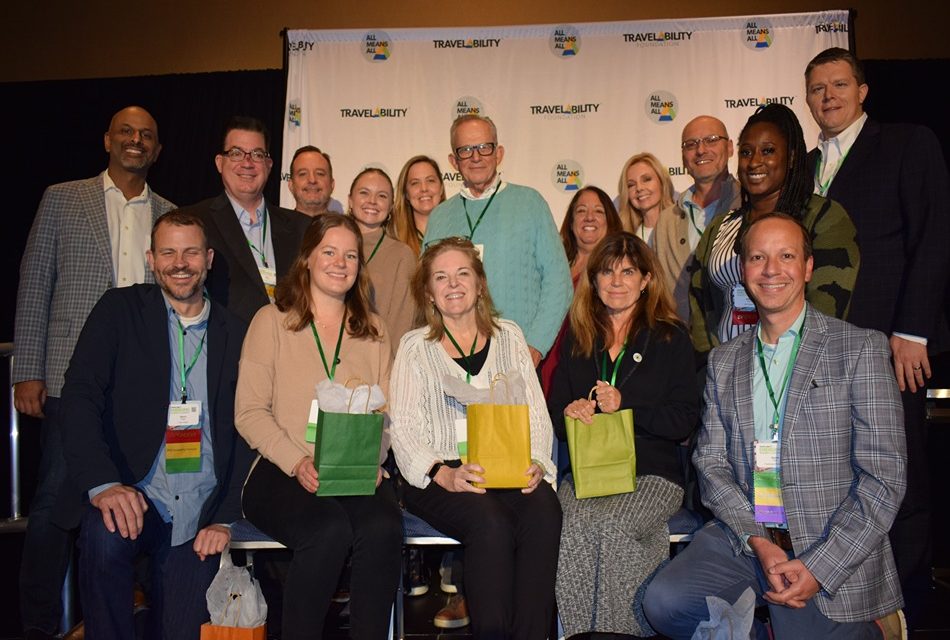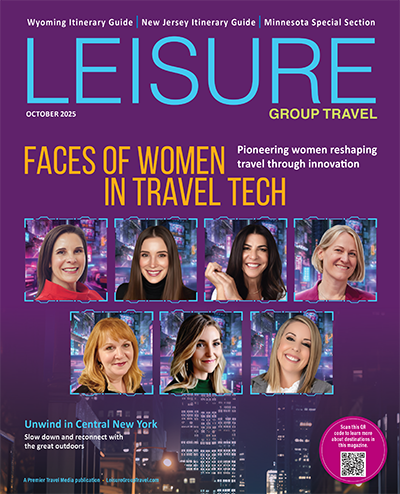Q&A with Jake Steinman, North American Journeys
Jake Steinman’s travel industry career spans more than three decades. As the founder of North American Journeys, he built a reputation for connecting destinations with tour operators, focusing on the inbound market and technology innovations. Through organizing events like the eTourism Summit and the Active America China Summit, Steinman played a pivotal role in shaping how destinations attract travelers. However, after 25 years of working in tourism, he began to notice a critical gap in the industry—one that directly impacted millions of travelers worldwide.

After a personal experience in his business, Jake’s perspective shifted and he started to make connections with individuals whose travel challenges were often overlooked. This revelation led him to establish Travel Ability, a platform dedicated to advancing accessibility in tourism. Through Travel Ability, Steinman has worked to educate destinations, tour operators and industry leaders on the importance of accessible travel, advocating for clear information and practical solutions. His conference has helped bridge the gap between businesses and travelers with disabilities, making travel more inclusive for all.
Looking for expert insights and fresh travel ideas? Download the latest issue of Leisure Group Travel for free and start planning your next unforgettable group adventure.
Leisure Group Travel: Accessibility in travel has been a growing conversation, but there are still so many challenges. What do you see as the biggest issue travelers with disabilities face today?
Jake Steinman: One of the biggest issues is the lack of reliable, standardized information. People with disabilities often have to act as detectives just to figure out if a hotel, restaurant, or attraction is truly accessible. Businesses will say they’re ‘fully accessible,’ but when a traveler arrives, they find stairs, narrow doorways or inaccessible bathrooms. That’s a frustrating and humiliating experience. The indignity of being carried upstairs because there’s no elevator is unacceptable. We need more transparency and standardization in accessibility information to ensure travelers can make informed decisions.
LGT: Some destinations and travel businesses seem to be making progress. What role do DMOs play in improving accessibility?
JS: DMOs are in a unique position to bridge the gap between travelers and businesses. Some, like the state of Oregon and Mesa, Arizona, are ahead of the curve. Others are starting to develop accessibility templates and checklists that help hotels, restaurants, and attractions provide clear, detailed information about their accessibility features. If a DMO takes the lead in standardizing and sharing this information, it helps tour operators and travelers plan better, reducing frustration and making destinations more welcoming.

LGT: Student travel is another sector where accessibility is crucial. What are some challenges schools and tour operators face in ensuring accessibility for student groups?
JS: More students with disabilities are being mainstreamed into regular classrooms, so accessibility in student travel has become an urgent issue. If a school plans a trip and can’t accommodate a student with mobility, cognitive, or behavioral needs, the entire trip could be in jeopardy. Schools that don’t provide necessary accommodations could even face legal consequences. Tour operators need to proactively offer solutions like wheelchair rentals, accessible transportation, and medical equipment availability to ensure all students can participate.
Stay ahead of the trends in group travel. Download the current issue of Leisure Group Travel and discover top destinations, planning tips, and industry news—all for free!
LGT: What opportunities does accessible travel present for tour operators?
JS: Large tour operators have already discovered that embracing accessible travel extends the lifespan of tour offerings and attracts a growing market. There’s a misconception that accessibility is a niche market, but in reality, it’s a massive opportunity. Think about baby boomers—they have an average net worth of $1.1 million, and there’s an expected $13 trillion wealth transfer happening. If travel businesses don’t adapt to meet their needs, they’re missing out on a significant revenue stream. Plus, influencers in the accessible travel space are driving awareness and pushing for change, which makes this the perfect time for the industry to take action.
LGT: But often we hear that baby boomers are not as interested in group tours as the previous generation. Is that really the case when we factor in accessibility?
JS: The perception is that today’s 65-year-olds are independent travelers, but that may shift as they age and mobility issues arise. Travel remains a high priority for baby boomers, who control much of the wealth. As they age, they’re still willing to spend on travel, but accessible can be an issue. Many people, including those with age-related disabilities, enjoy group travel for the camaraderie and convenience. A group tour can provide the necessary support and logistics, making travel much easier for those with accessibility concerns.
LGT: You mentioned influencers in accessible travel. How are they shaping the conversation?
JS: Social media has given travelers with disabilities a platform to share their experiences. Influencers in the accessible travel space are not just raising awareness—they’re holding destinations and travel businesses accountable. They showcase both positive and negative experiences, and that visibility pressures companies to improve. The travel industry is starting to recognize that accessibility isn’t just about compliance—it’s about delivering a better experience for everyone.
LGT: What are some overlooked aspects of accessible travel that need more attention?
JS: One thing that’s often overlooked is how small details can make a huge difference. Something as simple as a trash receptacle blocking an elevator button can make a hotel inaccessible. Attractions and hotels also need to consider travelers with autism or sensory sensitivities. Creating quiet spaces, providing sensory-friendly experiences, and training staff to be more accommodating can make destinations far more welcoming.
LGT: Where do you see the future of accessible travel heading?
JS: I see a future where accessibility is just part of standard travel planning. Right now, it’s treated as an afterthought, but as demand grows, businesses will need to be proactive. DMOs will need to partner with travel advisors to ensure accurate information is available, and tour operators will need to integrate accessibility into their core offerings. The industry has an opportunity to create a more inclusive travel landscape—one where no one is left behind.
LGT: Any final thoughts on how the industry can take immediate steps to improve accessibility?
JS: Start small but be intentional. Simple changes—clearer accessibility information, staff training, and minor infrastructure adjustments—can have a big impact. DMOs, tour operators, and hotels need to work together to make sure accessibility isn’t just a checkbox, but a genuine commitment. If we get this right, we’ll not only open up travel to millions more people, but we’ll also create a more welcoming industry for everyone.
Learn more about Jake Steinman at Travel Ability.net.
Your next group adventure starts here! Get your free copy of Leisure Group Travel magazine and explore the best destinations, itineraries, and travel ideas.







